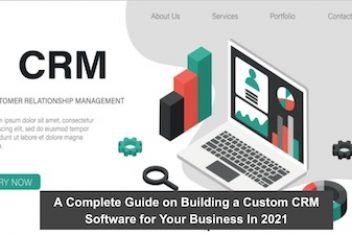A remote work period conditioned by the Covid-19 pandemic has proven that employees don’t have to work from the office to be highly productive and collaborate effectively. More importantly, over the past two years, they have experienced unprecedented work flexibility and autonomy, resulting in improved work-life balance.
The perception of the workplace changed forever. This is why more than 66% of employees who participated in a survey in 2021 stated that they would prefer to continue working from home once the health scare was over.
However recently emerging trends like the Great Resignation and quiet quitting indicate that this massive shift has downsides too.
Advanced technology plays a crucial part in establishing and running a productive hybrid workplace. Various communication and project management platforms accompanied by employee computer monitoring apps enabled seamless communication and collaboration allowing managers to track employee activities and time at work to make sure they remain highly productive in a hybrid or remote environment.
While technology is a significant part of the winning formula for running hybrid teams successfully, everything starts and ends with leadership. To be an effective leader of a remote or hybrid team, you need to find a fine balance between technology and company culture, making sure that excessive use of technology doesn’t affect company culture and the sense of community among your employees.
Read: How to avoid depression due to distance learning during a pandemic
Technology Can’t Replace Leadership
Different tech solutions can streamline your workflow and boost employee productivity in the hybrid work environment. But besides these positive effects, you may experience your company may experience higher turnover rates. Employee engagement and work satisfaction are leaders’ responsibilities. And you can optimize the technology solutions you use to define work aspects that require in-person collaboration, separating them from the work that can be done remotely.
The time spent in the office is especially important to onboarding employees and those who joined your company during the pandemic. In-person interaction will be invaluable for them to create meaningful relationships with colleagues and mentors.
Defining meaningful moments and creating incentives, like interesting training and learning opportunities may motivate your employees to work from the office more often.
Infusing Real Life into Virtual Workplace
Back in the days when office work was a norm, you could walk up to your colleague’s desk when you needed advice or a second opinion about tasks or work-related issues. The lack of accessibility and in-person communication and socializing that sparks innovation and collaboration is a significant shortcoming of the hybrid workplace.
Read: 6 Types of Security Software to Keep Your Workplace Protected
Metaverse could offer a solution to this issue in the future, enabling workers, or better said their avatars to interact and socialize in the virtual office space. Until this happens, you can encourage your employees to share snippets of their lives during video calls, working from the home space that best suits their needs and represents their personalities.
Also, real-life situations that may happen during a virtual meeting, like a child popping on the screen or a pet running around shouldn’t be frowned upon. Your employees may be more motivated for work if they can frequently share pieces of their lives that aren’t work-related.
Final Words
Creating a proactive culture in the hybrid workplace may be challenging but feasible. You need to adjust your office spaces to employees’ changing needs if you want to see them there more often. So instead of outdated cubicles, offer a modular working space that transforms easily to meet different needs. You should focus on creating collaborative meeting spaces, making sure that all your employees, office-based and remote are involved and heard.
Read: How to Avoid Burnout at Work: Tips and Strategies
Creating and leading a successful hybrid workplace is a mutual effort between you and your employees. So make sure that they’re involved in the entire process, listening carefully to their feedback and making necessary changes to create an optimal hybrid work environment.
If you like the content, we would appreciate your support by buying us a coffee. Thank you so much for your visit and support.



